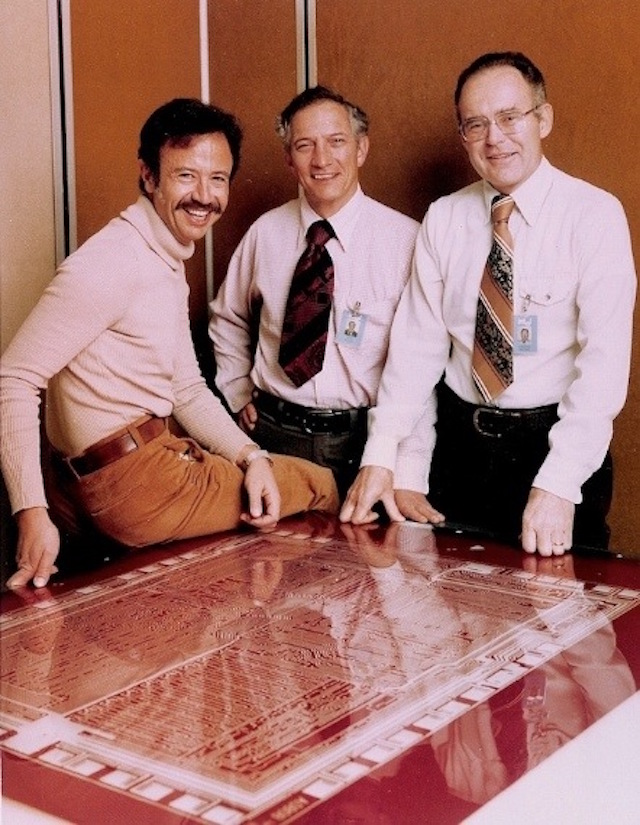The “20 Questions with John East” series continues
Intel was founded in 1968 by Robert Noyce and Gordon Moore who had left Fairchild earlier that year. They immediately hired Andy Grove. Noyce, Moore and Grove were a study in contrasts. I had various dealings over the years with Noyce and Grove, but have met Moore only twice. They had some things in common, but were very different in others. The similarities? Education and IQ. They were all very, very smart and all had PhDs from the very best universities: Noyce from MIT, Moore from Cal Tech, and Grove from Berkeley (His last year there was my first so we overlapped but I didn’t meet him until later in life).

With respect to personalities, there were differences!! Noyce and Moore? – the nicest two guys in the world. Nearly anyone you’d ask would tell you that. In fact, maybe they were too nice? Andy once told me that he thought so. But not many people would say that about Andy. Andy was not “too nice”. Most would say he was the toughest, most direct, most in your face guy in the world. Most would say that he had no taste for incompetence and a very, very high standard for what comprised competence. And all of those he found incompetent (Even if only temporarily) paid the price!!! Noyce and Moore founded Intel. The fact that they chose Grove to join them as the third employee might say a lot about their ability to recognize their own strengths and weaknesses. The three rotated through the CEO job. Noyce held the reins from 1968 to 1979 and then passed them to Moore. Moore, in turn, passed them to Grove in 1987. Grove passed them to Craig Barrett in 1998.
Fairchild’s management was curious!! The question back at Fairchild was: What was Intel up to? What products were they working on? No one knew. They kept it a close secret. Some rumors had it that they were working on advanced TTL (Transistor – transistor logic) products. Others had them going into the analog space. After all, those two markets comprised the bulk of the IC business in those days. Not so fast!! Noyce and Moore were smart guys. They realized that the Achilles heel of computation in those days was memory. The existing memory techniques were dreadful. Almost all memory functions were achieved in those days using core memory. Core memories were made by taking huge arrays of small irons cores — bits of iron shaped like doughnuts but much, much smaller — and stringing three wires going in three different directions through each of the cores. The most common adjectives used to describe them? Heavy. Bulky. Slow.
It was generally believed that, in order to replace magnetic cores, you would need to be able to sell semiconductor memory for around one cent per bit – about the price of core memory in those days. In truth, though, it was tougher than that. The core memory manufacturers were getting better and better so .1 cent per bit was really a better target. One tenth of a cent per bit? Would that be easy? Or next to impossible? In 1969 I was a product engineer at Fairchild. One of my products was the 9033 – a 16 bit bipolar memory. Except – it wasn’t a very useful memory because it didn’t have any address decoding. The word lines and bit lines came directly out to the package pins so the decoding had to be done externally. From what I remember (And admittedly my memory is really, really sketchy), the yield wasn’t very good so the die cost might have been around one dollar. Add in the cost of the decoding that should have been on the chip but wasn’t and you’d probably be at around a two or three dollar die cost. Adding in the cost of packaging, testing, etc and then a decent profit margin, my guess is that a hypothetical useful 16 bit bipolar memory from Fairchild would have sold for in the neighborhood of $10. $10 for 16 bits comes to about sixty cents per bit. About 100 times more than the market demanded. So – it seemed hopeless.
Hopeless? That’s what Noyce and Moore loved. That’s what they were good at. In 1969 they announced their first product. A memory. Not a TTL logic chip. Not an analog chip. A 64 bit memory. A short while later they announced the Intel 1101 — a 256 bit static memory designed using PMOS silicon gate technology — a technology that had been a focus at Fairchild. It was slow – 1 microsecond access time — and needed some awkward power supplies to make it work — +5V, -7V, and -10V — so it wasn’t a world beater, but it was a start. Did they make the .1 cents / bit price point? No. Not even close. But they started the ball rolling. Soon nearly every semiconductor company jumped on the RAM bandwagon. Competition and innovation were fierce.
By the time the mid seventies rolled around, core memory was a thing of the past.
Next week: The year that changed the world.
See the entire John East series HERE.
Pictured: The early Intel management triad. From left to right: Andy Grove, Bob Noyce, Gordon Moore.
Share this post via:





Comments
One Reply to “Intel let there be RAM”
You must register or log in to view/post comments.